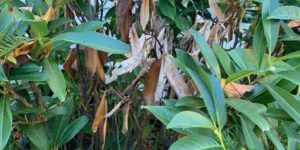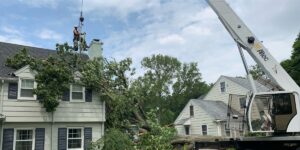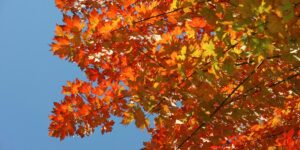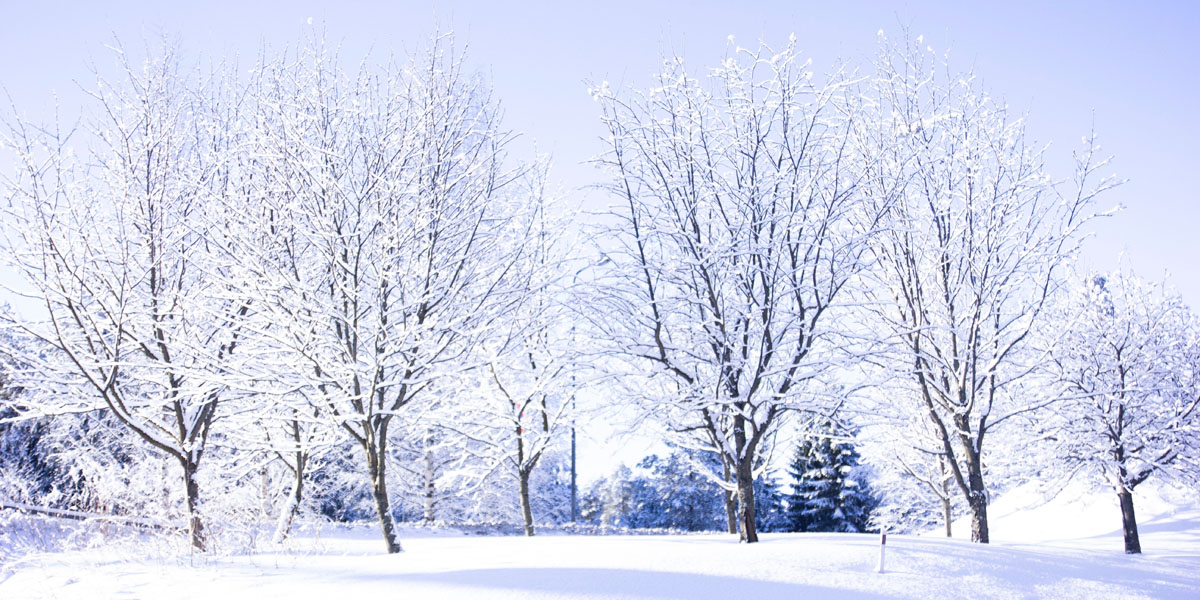The End of EAB Quarantine
Happy New Year, everyone!
My 2021 starts with another round of a tear-jerking anterior nasal swab. I’m clear, and the higher power at the main campus releases me back in the office.
With a new year comes new resolutions. I’m not silly enough to make resolutions I have no intention of keeping, such as exercise more. I’ll take more leisurely walks in the woods if that counts as exercise.
There’s a different kind of resolution happening at USDA APHIS.
APHIS is ending its federal domestic emerald ash borer (EAB) quarantine program, effective January 14, 2021. Click here if you’re interested in reading the final rule document. (It’s actually an interesting read, especially APHIS’s responses to some of the comments.)
For those of us who are somewhat familiar with the history of invasive species eradication programs and have been watching from the sideline since the very beginning of the EAB saga, this outcome isn’t unexpected. We’d hoped at the beginning that we’d be able to stop EAB and its damage. But, as EAB spreads from southeastern Michigan in 2002 to 35 states and the District of Columbia today, and after organizations and individuals involved had billions of dollars spent on regulations, research, tree removal and other activities, APHIS is quitting the ineffective program. APHIS started the rule removal process in 2018. After reviewing 146 comments, APHIS published its final rule on December 15, 2020.

Distribution of EAB as of December 31, 2020. (Map by USDA APHIS.)
So, what does it mean when APHIS removes EAB domestic quarantine? As of January 14, APHIS no longer issues permits, certificates and compliance agreements; regulates movement of wood, ash wood products, and hardwood firewood; makes site visits; and investigates quarantine violations. Under the EAB quarantine, movement of ash trees is regulated, but that of non-ash hardwood species is not. So, unless you’re growing ash trees, liners, or saplings for a living, I think the impact of ending the quarantine regulations will be relatively minor. For municipalities, however, tree removal will still be a burden, but disposal of the ash chips and logs will now follow state regulations. Each state will have to decide what they want to do with their own internal state quarantine.
APHIS will transition to a role of supporting management of EAB. Resources will be diverted to developing and implementing management and containment programs against EAB. One major focus will be a biological control program. APHIS and its state and local partners will continue to rear, release and document the effectiveness of parasitic wasps in suppressing EAB population and protecting ash trees and saplings. Click here for a document on the changes to APHIS’s EAB program.
Emerald ash borer (EAB) has been in the Morris County area for a couple of years and has already caused widespread loss of our beautiful ash trees. At this point, it’s not a matter of IF your ash trees will be attacked – it’s simply a matter of WHEN.
This destructive pest is spreading throughout New Jersey, and it affects you.
Quick Facts About EAB
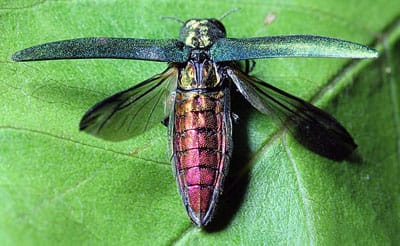
Adult EAB beetles are bright, metallic green and about ½-inch long. They can fly a mile or more, quickly spreading to nearby properties.
The Emerald Ash Borer:
- Attacks and destroys just ash (Fraxinus) trees, of which there are 16 species
- Has already killed tens of millions of trees in the U.S. and Canada
- Was first identified in Michigan in 2002 and found in New Jersey in Bridgewater Township, Somerset County in May 2014.
- Has now been found in 15 New Jersey counties, including Morris County
- Morris County has the densest population of ash trees in the state, making it particularly vulnerable to EAB damage
- Has expanded its range to 30 U.S. states
- Kills over 99% of trees it attacks – unless the tree has been treated to prevent this
- Ash trees killed by EAB are dangerously unstable and hazardous to nearby structures and people
- Removing untreated ash trees is the only way to prevent the spread of EAB
What to Know About the EAB
Currently, there is no cure for trees infested with EAB, and the beetle’s range is expanding.
Both municipalities and homeowners are being affected by the EAB as it destroys ash trees on public land and private property.
Some important points:
- If you have ash trees and are within the (expanding) range of the EAB, it is guaranteed that this insect will eventually arrive in your garden and attack your ash trees.
- You can check your location on this map of the EAB range in New Jersey, and read more about the pest.
- All infected ash trees will need to be treated or removed, depending on their condition.
- Stored ash firewood is a source of EAB larvae. Firewood within the quarantined EAB range cannot be transported to other areas! You can find information from the New Jersey state government about what to do with your logs here.
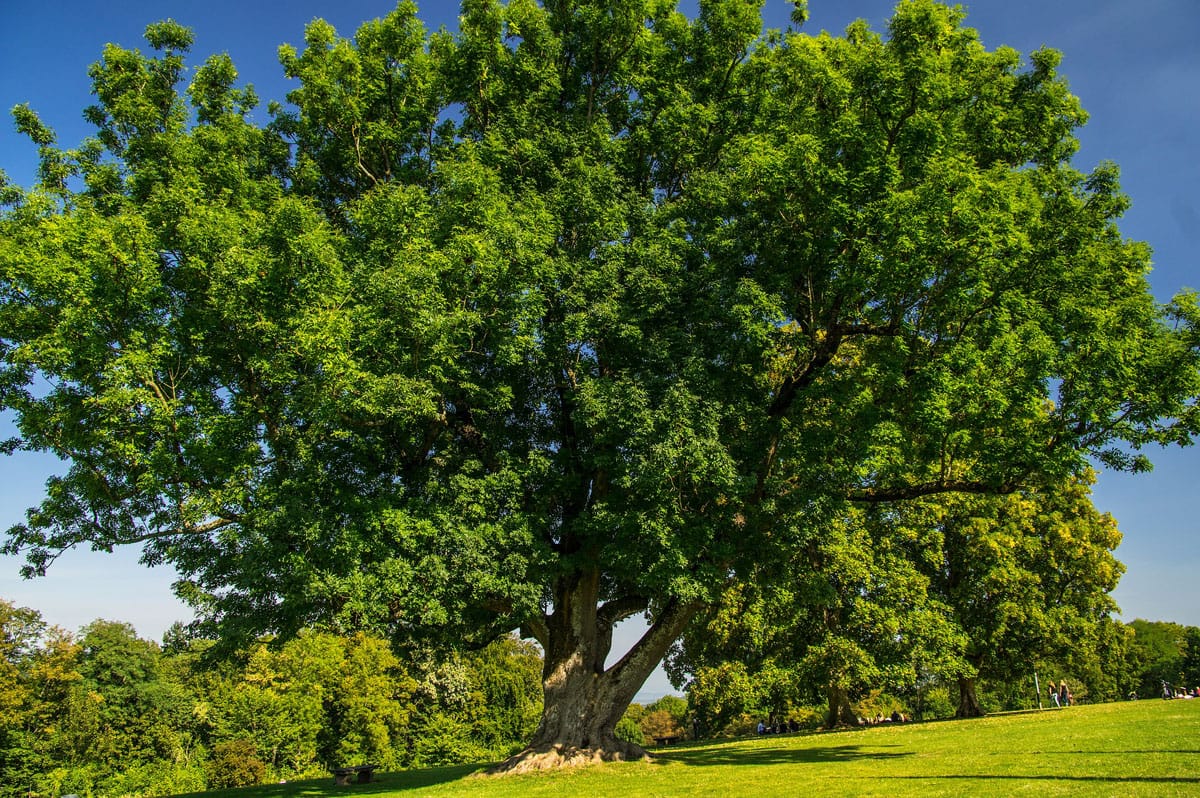
Older, larger ash trees are worth preserving for a multitude of reasons
EAB in Morristown, Chatham, Madison & Nearby Towns
As of the end of 2019, EAB has been detected throughout Morris County in Chatham, Chester, Hanover, Morris, Mt. Olive, Randolph, and Washington Townships, as well as in Morristown.
Municipalities are responding aggressively to try to stop the spread of this destructive pest.
For example, Morris County is removing ash trees along county roads in all 39 county municipalities.
The Morristown Shade Tree Commission, in coordination with the Town of Morristown, has been removing all ash trees in the public right of way to ensure the safety of residents. Ash trees within the park system along walking paths are also being removed.
The Chatham Borough Shade Tree Commission has arranged for healthy ash trees on borough property and public rights-of-way to be treated. Other ash trees are being removed and replaced with other tree species.
The nation’s largest ash tree is in Madison, NJ. It has been proactively treated to prevent infestation with EAB and protect this valuable piece of our history.
You can find more information about Emerald Ash Borer in New Jersey at www.emeraldashborer.nj.gov.
Doing Nothing is Not an Option
Most importantly, if you have ash trees, you cannot take a “do nothing” approach. If you have an infected ash tree, it is your civic responsibility to treat it or remove it. We’re all in this together.
In 2017, New Jersey State Forester John Sacco estimated that by 2027, most of New Jersey’s 24 million ash trees will be dead if the emerald ash borer is not stopped.
An infected tree is an incubator for hatching EAB larvae, which will fly off to find other ash trees in the vicinity. Treating or removing your ash tree means you won’t be contributing to the growing populations of EAB in your area, across the state, and in neighboring states.
If you imagine that each EAB can fly a mile away to find a new tree to attack, you can see how quickly EAB populations spread outward from where they hatch.
Another factor is safety. A dying tree is a hazard if it’s located anywhere near people or property, as its structure and stability is compromised. Damaged ash trees, in particular, are brittle and highly unpredictable. Unlike remote woodland trees, a dying neighborhood tree can’t safely be left where it is.
To help identify trees and determine whether or not they’re a potential hazard, take a look at the graphic below.
Any Good News About EAB in New Jersey?
Yes. In short, there’s help available.
You most likely won’t notice Emerald Ash Borers until a couple of years after they’ve started damaging your trees (by which time it’s likely too late to save your ash trees). Therefore, it’s important to find out as soon as you can if EAB is present in your garden, woodland, or neighborhood.
Green prism traps are one way in which EAB populations are discovered, monitored, and reported, often long before you become aware of them. The insects found on traps are analyzed and counted, and results are shared with task forces and researchers. This information helps foresters, arborists, and government agencies to make informed decisions about EAB control strategies. That information is posted online where you can check to see how close the EAB is to your property.
WHY IS EARLY DETECTION SO IMPORTANT?

Emerald ash borers leave telltale tunnels in the wood of ash trees that they have destroyed. Pictured here is an ash tree that Alpine Tree removed.
An ash tree that has had two years or more of EAB infestation is almost certainly beyond saving and likely must be removed. Finding EAB early on means you have options for saving your tree.
A mature ash tree has, like all mature broadleaf and evergreen trees, more value than a young tree. In addition to its carbon-storing ability, a mature tree provides:
- Needed shade and lower temperatures in summer
- Improved air quality
- Habitat for birds and wildlife
- Increased property value, as mature specimen trees are more prized than young ones
- Beauty
While beauty as a value is less quantifiable than others, it cannot be overlooked. Spending time around trees is directly linked to better mental and physical health for children and adults.
And who doesn’t want to drive or walk down a tree-lined street? In summer, it’s a tunnel of green leaves and dappled shade; in fall, it’s a shower of gold. Let’s ensure the continuing health of these beautiful places.
What Should I Do If I Have An Ash Tree?
First, find out the condition of your tree by calling a Certified Arborist to evaluate it.
Early detection on an otherwise healthy tree means you have EAB treatment options. You’ll get all the information about EAB explained to you by a knowledgeable professional. Arborists don’t want to remove beautiful trees any more than you do, so we encourage you to treat a valued tree early.
It IS possible to treat ash trees with an injected pesticide that kills the emerald ash borer and prevents it from reproducing. Treatment begins in late spring and must be repeated every 1 to 3 years (depending on the type of treatment used and condition of your tree).
Should I just cut my ash tree down?
You can cut your ash tree(s) down as a pre-emptive measure to prevent the spread of EAB. But please call in the professionals – we do not recommend that a homeowner tackle this themselves. A large tree needs to be removed in particular steps to avoid damage to you, your house, and your neighbors and requires specialized equipment.
EAB-infected ash trees may have internal structural damage and dead ash trees are extremely brittle, making them unsafe for a homeowner to climb or cut down themselves. And bear in mind that because of this, some insurance companies won’t cover damage caused by an infected ash tree if you cut it down yourself.
A diseased ash tree will also need its stump ground out to prevent suckering growth from reappearing around the trunk base. You don’t want new EAB habitat to sprout!
If EAB treatment is not possible, the tree care professionals at Alpine Tree can also remove your affected tree, grind out its stump AND replant a new tree species that will not be susceptible to EAB or other common pests, all in short order.
DON’T DO NOTHING!
The EAB is seriously destructive, and destructive on an enormous scale. Help control this pest and help our ash trees to survive so we can all continue to benefit from their welcoming, leafy canopies.
Worried that your ash trees may be infested with Emerald Ash Borer? Want to protect your trees before they’re attacked?
Give us a call at 973-964-7798!


